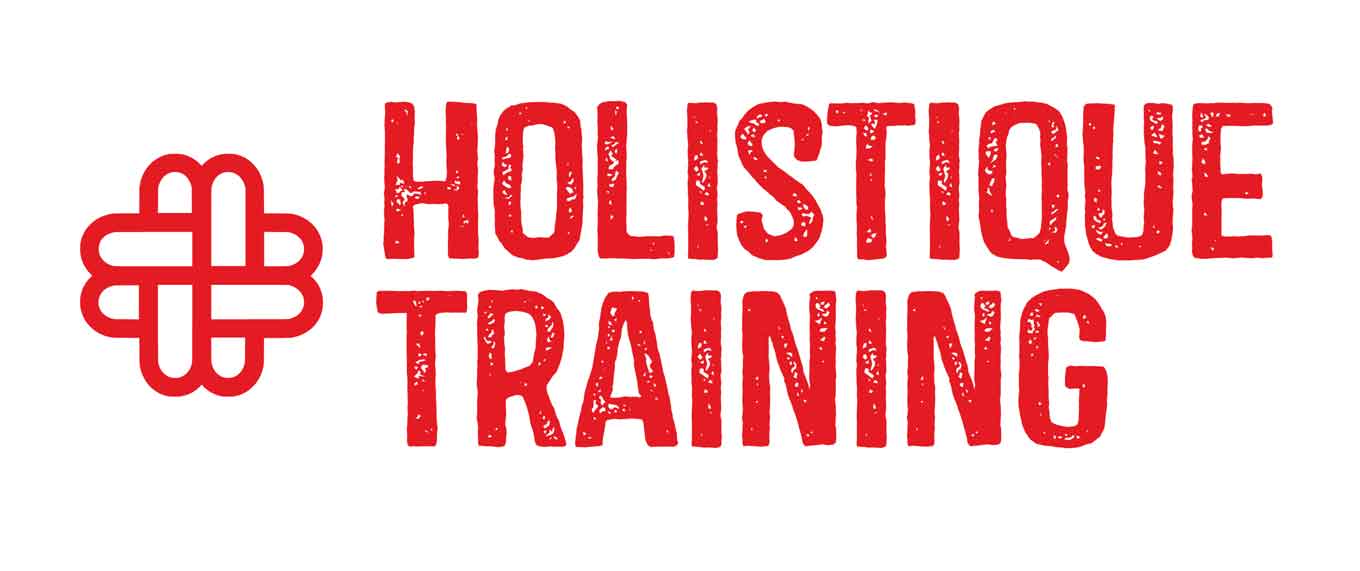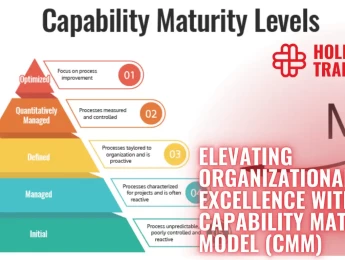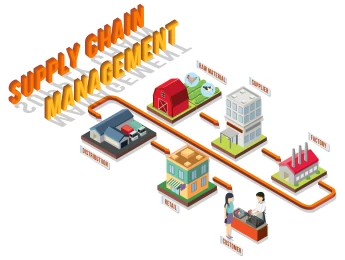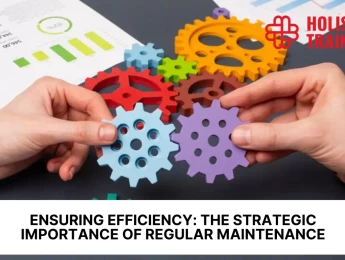- Table of Contents
- 1. Introduction
- 2. What Are SOPs?
- 3. Why SOPs Matter in Project Management
- 1. Enhancing Efficiency and Reducing Costs
- 2. Ensuring Consistency and Quality Control
- 3. Facilitating Training and Onboarding
- 4. Supporting Compliance and Risk Management
- 3.5. Promoting Scalability and Continuous Improvement
- 4. Key Benefits of SOPs in Projects
- 5. Data-Backed Impact of SOPs
- Comparison Table: SOPs vs. Other Process Documents
- 6. When and Where to Use SOPs
- When to Use SOPs
- Where to Use SOPs
- SOP Use Case Example: Client Onboarding
- 7. Steps to Create Effective SOPs
- 1. Identify Recurring and Critical Processes
- 2. Involve the Right People in SOP Creation
- 3. Choose the Right Format and Tools
- 4. Train Your Team and Integrate into Onboarding
- 5. Link SOPs to Project Phases
- 6. Monitor Usage and Collect Feedback
- 7. Review and Update Regularly
- Implementation Checklist
- 8. Common Challenges and How to Overcome Them
- 1. Not Involving Key Stakeholders in the Creation Process
- 2. Overcomplicating the SOP
- 3. Failing to Regularly Review and Update SOPs
- 4. Not Providing Adequate Training on SOPs
- 5. Ignoring Feedback from Users
- 6. Overloading SOPs with Too Much Information
- 7. Not Making SOPs Easily Accessible
- 8. Not Customizing SOPs for Different Teams or Roles
- 9. Underestimating the Need for Flexibility
- 10. Failing to Track and Measure SOP Effectiveness
- 9. Training and Development for SOP Implementation
- 1. Establishing and Managing a Project Management Office (PMO)
- 2. Becoming A Project Management Specialist
- 3. Leading with a Global Mindset: Skills for a Diverse World
- 11. Conclusion
1. Introduction
Managing projects can sometimes feel like juggling a hundred moving parts at once. As teams grow and tasks become more complex, staying organized and making sure everyone is aligned becomes harder, and more important, than ever. That’s where Standard Operating Procedures, or SOPs, come in.
At first glance, SOPs might seem like just another layer of corporate bureaucracy. But in reality, they’re a game-changer. When done right, SOPs bring structure, clarity, and consistency to your workflow, helping you deliver projects more smoothly, on time, and within budget.
In this article, we’ll break down what SOPs really are, why they matter in project management, and how they can make a big difference in the way you and your team work. Whether you're hoping to boost collaboration, avoid common pitfalls, or simply make your life a little easier, SOPs can be your secret weapon. By the end, you’ll know how to build and use them to create a more efficient, accountable, and high-performing team.
2. What Are SOPs?
Standard Operating Procedures (SOPs) are detailed, written instructions created to achieve uniformity in the performance of specific functions. They serve as a foundational tool in project management by ensuring that tasks are completed consistently and correctly, regardless of who is performing them.
At their core, SOPs are about clarity and repeatability. In a fast-paced project environment, especially when dealing with cross-functional teams or external stakeholders, the margin for error narrows. Having SOPs in place minimizes the risk of miscommunication or forgotten steps, ensuring that all team members are aligned and equipped to execute tasks as intended.
SOPs are not just dry manuals to be read once and forgotten; they are living documents that evolve with the team and the project. They help capture institutional knowledge, reduce onboarding time for new employees, and make it easier to delegate tasks without fear of quality loss. Whether it’s something as complex as managing a product launch or as routine as submitting a budget report, SOPs provide a clear roadmap.
In essence, SOPs are the glue that holds operational excellence together. They convert chaos into order, replace memory with documented knowledge, and set a reliable standard for performance.
3. Why SOPs Matter in Project Management
In the dynamic realm of project management, where timelines are tight and resources are finite, Standard Operating Procedures (SOPs) serve as indispensable tools that bring order and efficiency. They are not mere documents but strategic assets that underpin successful project execution.
1. Enhancing Efficiency and Reducing Costs
SOPs streamline processes by providing clear, step-by-step instructions, eliminating ambiguity, and reducing the time spent on decision-making. This clarity leads to faster task completion and optimal resource utilization.
A study by McKinsey & Company highlights that standardizing processes can reduce the time employees spend on administrative tasks by up to 20%, leading to significant cost savings across departments.
2. Ensuring Consistency and Quality Control
Consistency is crucial in project management to maintain quality standards and meet stakeholder expectations. SOPs ensure that tasks are performed uniformly, regardless of who is executing them, thereby minimizing errors and variations.
3. Facilitating Training and Onboarding
Bringing new team members up to speed can be time-consuming. SOPs serve as effective training tools, providing newcomers with the necessary knowledge to perform their roles efficiently, thus reducing the learning curve and accelerating productivity.
4. Supporting Compliance and Risk Management
In industries with stringent regulatory requirements, SOPs are vital for ensuring compliance. They provide a framework for adhering to laws and standards, thereby mitigating risks associated with non-compliance.
Deloitte reports that effective SOPs can reduce compliance-related risks by up to 60%, underscoring their importance in risk management strategies.
3.5. Promoting Scalability and Continuous Improvement
As organizations grow, maintaining process consistency becomes challenging. SOPs provide a scalable foundation that supports expansion by ensuring that new teams or departments can replicate established processes effectively.
Furthermore, SOPs facilitate continuous improvement by serving as benchmarks for evaluating and refining processes, leading to enhanced performance over time.
4. Key Benefits of SOPs in Projects
Standard Operating Procedures (SOPs) are more than just administrative tools; they are essential drivers of consistency, efficiency, and long-term success in project management. When applied effectively, SOPs provide clarity, reduce the likelihood of errors, and streamline team communication. In today’s fast-paced and often distributed work environments, teams face increasing pressure to deliver high-quality outcomes under tight deadlines. Without clearly defined processes, even the most skilled professionals can fall into cycles of confusion, duplicated effort, or inconsistent output.
SOPs help by setting a shared standard for how tasks should be completed, ensuring everyone, from seasoned project managers to new team members, is on the same page. They are especially useful for routine or high-impact processes, where accuracy and uniformity are critical. But beyond keeping people aligned, SOPs support better delegation, faster onboarding, easier performance evaluation, and a more agile response to change. Organizations that prioritize SOP development often report smoother workflows, fewer misunderstandings, and greater confidence when scaling operations or handing off tasks.
The table below summarizes the core benefits of SOPs and how they address common challenges in project environments:
Benefit | How SOPs Help |
Consistency | SOPs ensure tasks are completed the same way every time, reducing variability and ensuring a uniform standard of work. |
Efficiency | Teams don’t waste time figuring out processes from scratch; SOPs streamline task execution and eliminate unnecessary back-and-forth. |
Quality Assurance | Standard procedures help maintain a high level of output by minimizing errors and clarifying quality checkpoints. |
Training & Onboarding | New team members can quickly learn procedures by following existing SOPs, accelerating their learning curve and reducing dependency on senior staff. |
Compliance | SOPs document how to follow industry or legal regulations, supporting audit readiness and reducing the risk of fines or reputational damage. |
Knowledge Retention | Institutional knowledge doesn’t leave with a departing employee; SOPs preserve best practices and workflows over time. |
Scalability | As organizations grow, SOPs provide a replicable model that allows processes to scale across teams, departments, or even geographic regions. |
Crisis Preparedness | In the event of disruptions, SOPs allow continuity by enabling others to take over responsibilities without gaps in knowledge or execution. |
Whether you’re managing internal projects, client-facing deliverables, or technical implementations, these benefits translate into tangible gains; like reduced project timelines, improved client satisfaction, and greater team confidence. SOPs serve as the backbone of project reliability, helping leaders build resilient, high-performing teams that can adapt without losing structure.
5. Data-Backed Impact of SOPs
In any structured organization, documentation is key to ensuring smooth operations. However, not all documents serve the same purpose, and this is where confusion often arises. Many teams mistakenly treat SOPs, policies, checklists, and work instructions as interchangeable, leading to inefficiencies and communication breakdowns.
To get the most out of your documentation system, it’s important to understand the distinct role SOPs play within the wider ecosystem of process documents:
- Policies tell you what needs to be done — they outline rules, principles, or expected behaviors at a high level.
- Checklists help ensure you remember to do specific steps — they are quick reference tools to avoid missing anything.
- Work Instructions offer detailed, task-level guidance — often including technical or tool-specific steps.
- SOPs (Standard Operating Procedures) tell you how to do something — step by step, with clarity and consistency.
SOPs sit in the middle ground between high-level governance (like policies) and granular task-level instructions (like manuals or guides). This makes them:
- Structured enough to standardize outcomes across the organization.
- Flexible enough to be applied across teams and contexts.
Understanding these distinctions isn't just about terminology; it’s about ensuring:
- The right level of guidance is available for the right audience at the right time.
- Teams avoid making assumptions or skipping steps.
- Results are consistent, reliable, and efficient.
The table below offers a clear breakdown to distinguish SOPs from other commonly used process documents
Comparison Table: SOPs vs. Other Process Documents
Document Type | Function | Level of Detail | Example |
Policy | Sets rules and principles | High-level/general | “All customer data must be stored in encrypted databases.” |
SOP | Describes how to carry out a task or process | Medium-level, procedural | “Steps for encrypting and uploading customer data to secure databases.” |
Work Instruction | Provides detailed, technical task guidance | Very specific, tool-based | “Click the ‘Encrypt’ button in Tool X, select the customer file, and hit ‘Upload’.” |
Checklist | Serves as a quick task reminder | Minimal | “1. Encrypt file ✓ 2. Upload to cloud ✓ 3. Notify supervisor ✓” |
Each of these documents has a role to play. Policies align the organization with legal and strategic goals. Work instructions are ideal when someone needs to perform a task exactly the same way each time using specific software or machinery. Checklists support memory and verification. But SOPsbring all of these together in a usable, repeatable format that turns theory into practice and removes ambiguity from project workflows.
By maintaining this hierarchy and clarity, you avoid the trap of under-documenting critical tasks or overburdening teams with too much detail when it's not needed. The right documentation, in the right format, makes all the difference in team productivity, project success, and long-term scalability.
6. When and Where to Use SOPs
Standard Operating Procedures aren’t just tools for factories or technical departments; they're incredibly versatile assets in any field where processes, people, and performance intersect. But knowingwhen andwhere to use SOPs can make the difference between a document that gathers digital dust and one that truly transforms your workflow.
SOPs shine in scenarios where clarity, consistency, and coordination are critical. Their primary goal is to reduce ambiguity and ensure that tasks are executed with the same level of quality and detail, no matter who is doing them or when. Here’s how to determine the right time and place to use them:
When to Use SOPs
You should consider developing or applying SOPs when:
- The Task is Repetitive or Recurring:
Whether it’s onboarding a new client, conducting weekly team meetings, or preparing project reports, repeated tasks are perfect candidates for SOPs. The more a process is repeated, the greater the opportunity for errors or inconsistencies without standardization. - The Task is Complex or Multi-Step:
If a process involves multiple steps, teams, or systems, an SOP ensures that every part is executed in sequence and nothing is overlooked. This is especially important in technical projects, client handovers, or compliance-heavy industries. - There is a High Risk of Error:
In processes where a single mistake can be costly, financially, legally, or reputationally, an SOP acts as a safeguard. Think: data handling procedures, quality assurance, or regulatory reporting. - Team Members Are Frequently Changing:
When teams experience turnover or scaling, SOPs act as your organizational memory. They help new hires hit the ground running and reduce the training burden on managers. - You’re Delegating or Outsourcing:
Clear SOPs allow you to delegate tasks with confidence. Whether you're working with freelancers, virtual assistants, or other departments, SOPs ensure the outcome aligns with expectations, even when you’re not directly involved.
Where to Use SOPs
SOPs can be applied across almost every area of project management and business operations. Below are some common areas where SOPs provide exceptional value:
Department/Area | Example SOP Use Cases |
Project Management | Task assignments, sprint planning, milestone tracking, and project closure routines |
Operations | Inventory management, vendor onboarding, and logistics processes |
Finance | Invoice processing, expense reimbursement, and monthly reconciliation |
Human Resources | New employee onboarding, interview scheduling, and benefits enrollment |
Customer Service | Handling support tickets, complaint escalation, and CRM data updates |
Marketing | Campaign launch checklist, social media scheduling, and email list segmentation |
IT/Tech | System setup, data backup procedures, and access management |
Compliance & Risk | GDPR protocols, internal audits, and legal document review workflows |
No matter the industry or team function, SOPs help ensurenothing slips through the cracks. They allow managers to move from micromanaging tasks to overseeing outcomes, freeing up time for strategic thinking.
SOP Use Case Example: Client Onboarding
Let’s take a practical scenario: onboarding a new client in a digital agency. Without an SOP, the process might vary from one project manager to the next, leading to missed expectations, delays, or inconsistent communication.
With an SOP, the team can follow a clear path:
- Send the welcome email with access to shared platforms.
- Schedule a kick-off meeting.
- Collect brand assets and logins.
- Introduce the delivery timeline and roles.
- Share the first content draft or proposal.
This ensures that the client has a smooth, professional experience every time; no guesswork involved.
SOPs work best when they are strategically chosen and gradually introduced. Trying to document every process at once can be overwhelming. Start by identifying your pain points; those moments when you find yourself saying, "We keep making the same mistake," or "I wish everyone just followed the same steps." That’s your sign that an SOP could change the game.
7. Steps to Create Effective SOPs
Knowing the value of SOPs is only half the battle; implementation is where the real transformation begins. Creating SOPs is not just about documenting what already exists, but about carefully designing repeatable systems that enhance performance and adaptability. When introduced strategically, SOPs integrate seamlessly into the project lifecycle, from planning and execution to monitoring and closure.
The process of embedding SOPs into your workflow should be intentional, collaborative, and iterative. Here’s how you can implement them successfully:
1. Identify Recurring and Critical Processes
Start by mapping out your workflow and identifying tasks that:
- Are repeated frequently across multiple projects.
- Have a high impact on timelines, quality, or compliance.
- Involve multiple stakeholders or handovers.
- Have historically led to errors or inconsistencies.
These are the ideal candidates for SOPs. By targeting high-frequency or high-risk activities first, you’ll create quick wins and immediate improvements in consistency and performance.
2. Involve the Right People in SOP Creation
Effective SOPs are rarely written in isolation. They should involve input from:
- Subject matter experts (SMEs): Those who perform the task daily.
- Project managers: To ensure SOPs align with broader timelines and goals.
- Quality assurance teams: To ensure compliance and standards are met.
This collaborative approach ensures that the SOPs are not only accurate and practical but also accepted and followed by the people who actually use them.
3. Choose the Right Format and Tools
An SOP isn’t one-size-fits-all. Depending on your team and tools, it can be:
- A detailed document with screenshots.
- A step-by-step video tutorial.
- A page embedded within your project management software (e.g., Asana, ClickUp, Notion).
Use formatting tools like bullet points, flowcharts, and numbered steps to enhance clarity. The more visual and intuitive, the better.
Also, centralize your SOPs in a knowledge base or internal wiki where they’re easy to search and access.
4. Train Your Team and Integrate into Onboarding
Writing SOPs is pointless if no one uses them. Incorporate SOPs into:
- Training programs.
- New hire onboarding.
- Project kickoffs and retrospectives.
You want SOP usage to feel like second nature, part of your team culture, not an afterthought.
5. Link SOPs to Project Phases
Each phase of project management (initiation, planning, execution, monitoring, and closure) has its own set of repetitive tasks. SOPs can be created and embedded for:
- Initiation: Defining scope, stakeholder mapping.
- Planning: Risk assessments, budgeting approvals.
- Execution: Task handoffs, QA processes, communication routines.
- Monitoring: Reporting cadence, status update formats.
- Closure: Final deliverable reviews, team debriefs, client sign-offs.
This structured integration ensures SOPs are used at the right time and with the right level of importance.
6. Monitor Usage and Collect Feedback
Just because an SOP exists doesn’t mean it’s working. Set up regular review points to ask:
- Are people using the SOP?
- Is it helping them do the job more effectively?
- Have tools or workflows changed since it was written?
This feedback loop keeps your SOPs relevant and practical
7. Review and Update Regularly
Business needs evolve, technology changes, and teams grow. That’s why SOPs should be living documents. Set a standard review cadence; quarterly, biannually, or annually, to:
- Eliminate outdated steps.
- Add new tools or updated platforms.
- Reflect new organizational priorities.
Use version control (or tools with built-in revision tracking) to keep everyone aligned with the latest SOP version.
Implementation Checklist
Step | Goal |
Identify high-impact processes | Focus your SOPs where they’ll create the most value |
Involve key stakeholders | Ensure accuracy, buy-in, and practicality |
Choose intuitive formats | Make SOPs user-friendly and easy to reference |
Embed in onboarding and workflows | Normalize SOP use in daily routines |
Align with project management stages | Provide structure across the project lifecycle |
Collect feedback | Understand what’s working and what’s not |
Review and update regularly | Keep your SOPs agile and reflective of current practices |
8. Common Challenges and How to Overcome Them
Implementing Standard Operating Procedures (SOPs) can significantly improve workflow efficiency and consistency, but it’s not always a smooth process. Many organizations face pitfalls that can undermine the effectiveness of their SOPs. Below are some common mistakes to avoid during the implementation phase, along with tips for overcoming them:
1. Not Involving Key Stakeholders in the Creation Process
- What Happens: If the people who actually perform the tasks aren’t involved in writing the SOPs, there’s a higher chance that the SOP will miss crucial steps, overlook practical challenges, or contain irrelevant information.
- Solution: Involve subject matter experts (SMEs), team leads, and frontline workers. They offer insights into the nuances of tasks that may not be obvious at the management level.
2. Overcomplicating the SOP
- What Happens: An SOP that is too detailed, lengthy, or complex can overwhelm users, making it harder to follow. This can lead to confusion, mistakes, and low adoption rates.
- Solution: Keep SOPs clear and concise. Use simple language, avoid jargon, and focus on the most critical steps. If the process is too complicated, consider breaking it down into multiple smaller SOPs for different stages or functions.
3. Failing to Regularly Review and Update SOPs
- What Happens: Once an SOP is created, it can easily become outdated as processes, tools, or team structures change. An obsolete SOP can mislead users and create inefficiencies.
- Solution: Set a regular review cycle to ensure SOPs remain relevant. This could be quarterly or biannually, depending on the complexity of the processes. Always update them when significant changes occur, such as new software or regulations.
4. Not Providing Adequate Training on SOPs
- What Happens: Even if the SOP is well-written, it will be ineffective if employees are not properly trained on how to use it. Without proper training, employees may ignore SOPs or misuse them, leading to mistakes.
- Solution: Incorporate SOP training into onboarding programs for new hires, and provide regular refreshers for existing employees. This ensures that everyone is aware of the procedures and understands their importance.
5. Ignoring Feedback from Users
- What Happens: SOPs are often developed without considering feedback from those who will actually be using them. As a result, employees may find them difficult to follow, leading to non-compliance.
- Solution: Create a feedback loop where employees can share their experiences using the SOPs. Regularly check in with users to gather insights on areas of improvement and adapt the SOPs based on their real-world experiences.
6. Overloading SOPs with Too Much Information
- What Happens: Some SOPs try to cover every possible scenario in exhaustive detail, which can cause confusion and make it difficult for users to find the information they need quickly.
- Solution: Keep SOPs focused and specific to the process at hand. If multiple scenarios need to be covered, consider creating separate SOPs for each distinct scenario to keep information organized and easy to access.
7. Not Making SOPs Easily Accessible
- What Happens: If SOPs are stored in inaccessible locations or in complicated formats, employees may avoid using them. This can lead to inconsistent work practices and errors.
- Solution: Store SOPs in a centralized, easy-to-navigate location such as a knowledge management system, shared drive, or internal wiki. Ensure all employees know where to find them and how to use them effectively.
8. Not Customizing SOPs for Different Teams or Roles
- What Happens: One-size-fits-all SOPs can be inefficient, as they may not address the unique needs or workflows of different teams, departments, or roles.
- Solution: Tailor SOPs to specific functions or teams. While the core process may be the same, the steps or tools used can vary, so make sure the SOP is relevant to the intended user.
9. Underestimating the Need for Flexibility
- What Happens: SOPs that are too rigid or inflexible can stifle creativity and make it harder to adapt to changes or new challenges. Strict adherence to outdated procedures can also slow down problem-solving.
- Solution: While SOPs should provide structure and consistency, they should also allow for some flexibility. Ensure there is room for employees to adapt to unique circumstances while still following the essential steps.
10. Failing to Track and Measure SOP Effectiveness
- What Happens: Without measuring the performance of SOPs, it’s hard to know whether they are achieving their intended goals. Lack of tracking can lead to missed opportunities for improvement.
- Solution: Establish key performance indicators (KPIs) to track the effectiveness of your SOPs. For example, measure process completion times, error rates, or employee feedback. Use these metrics to refine and improve your SOPs over time.
By avoiding these common mistakes, organizations can ensure that their SOP implementation is not only effective but also sustainable over the long term. A well-executed SOP system becomes an invaluable tool that drives consistency, quality, and operational success.
9. Training and Development for SOP Implementation
Training and development are crucial for the successful implementation of Standard Operating Procedures (SOPs) within an organization.
By providing employees with the right training, you ensure that they understand the value of SOPs, how to use them effectively, and the benefits they bring in terms of efficiency, consistency, and quality. Training also fosters a culture of continuous improvement, making employees more adaptable to changes in the SOPs and overall processes.
Several training programs are designed to enhance your project management, leadership, and operational planning skills, all of which play a role in implementing and refining SOPs. Below are three valuable courses available on our platform that are directly related to the themes discussed in this article:
1. Establishing and Managing a Project Management Office (PMO)
A Project Management Office (PMO) serves as the backbone of effective project governance, ensuring alignment with organizational goals, resource optimization, and consistent value delivery. This comprehensive training course equips participants with the knowledge and skills necessary to establish, manage, or enhance a PMO within their organization.
Key Learnings:
- Explore foundational principles and types of PMOs, from supportive to directive structures.
- Learn to define a PMO's scope, design governance frameworks, and select appropriate tools and technologies to streamline operations.
- Understand the role of a PMO in standardizing project management practices, fostering collaboration, and driving strategic decision-making.
This course is ideal for those looking to design or transform a PMO into a center of excellence that drives efficiency, innovation, and sustained success
2. Becoming A Project Management Specialist
To keep your business moving forward, it’s essential to discover innovative products and services that captivate your customers. This course dives deep into creating foolproof project plans and business strategies that help secure a return on investment and mitigate risks.
You’ll learn how to conduct extensive market research, plan projects with precise timeframes, and develop comprehensive proposals that integrate technology, costs, and future projections. Project plans are fundamental in obtaining stakeholder buy-in and ensuring a successful project rollout. By the end of this course, you will be able to design a project plan that not only meets your business needs but also secures funding and drives long-term growth.
3. Leading with a Global Mindset: Skills for a Diverse World
In today’s interconnected world, leadership is no longer confined to one culture, country, or mindset. This course helps you develop the mindset and skills required to lead effectively in diverse, international environments. As project managers often work across borders and with cross-functional teams, understanding how to adapt your leadership style to different cultural contexts is key to the success of your projects.
This course focuses on how to understand cultural differences, communicate effectively across cultures, and build meaningful relationships with international teams. Through real-life examples and practical sessions, you’ll learn to lead with clarity, confidence, and respect for diversity, ensuring your projects run smoothly regardless of geographical boundaries.
By participating in these courses, you’ll gain practical skills and knowledge that directly apply to the successful implementation and management of SOPs within your organization. These programs will help you enhance your leadership, project management, and planning capabilities, ensuring that SOPs are effectively integrated into your business processes.
11. Conclusion
Implementing Standard Operating Procedures (SOPs) is more than just a technical requirement; it’s about creating a culture of consistency, collaboration, and continuous improvement. As we've explored, SOPs bring structure and clarity to the often chaotic world of project management, ensuring that your team has a shared understanding of processes, expectations, and goals.
But the journey doesn’t stop with simply creating SOPs. To truly reap the benefits, they need to be embraced by everyone involved; leaders, team members, and stakeholders alike. As you move forward with implementing and refining your SOPs, remember that it’s not just about creating rules; it’s about setting your team up for success.
Understanding the holistic nature of project management, as explored in our guide to sustainable project management, can complement the development of SOPs, ensuring that your projects not only meet their goals but also contribute positively to the environment and society
Ready to take the next step in enhancing your project management and leadership skills? Explore our courses today and start transforming your approach to project management. Learn how to implement SOPs effectively, lead diverse teams, and create a strategic vision that aligns with your organizational goals.
























